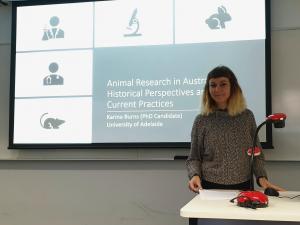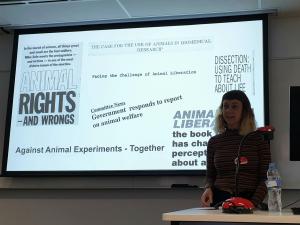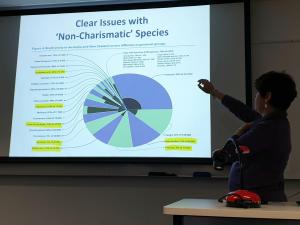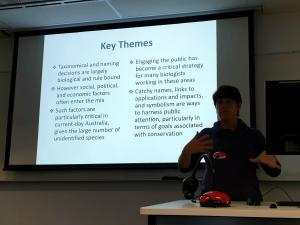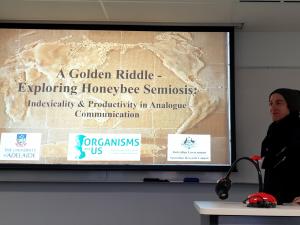Workshop summary: Ethics, Naming, and Communication with Organisms

Thank you to everyone who came along to today's Organisms and Us Ethics, Naming, and Communication with Organisms workshop and contributed to such reflective and constructive discussions around the presentation topics.
The afternoon kicked off with Karina Burns, a history PhD candidate at the University of Adelaide who talked about two of her projects around animal research ethics in Australia. She first took us on a historical tour of public discussions around animal research ethics, a conversation that began in earnest in the 1980s, looking at themes, threads, and the causal forces shaping such dialogue in the public and academic spheres. She followed this up with some research she has been doing on outcomes of animal research ethics applications in the present day, with recommendations for increased transparency and some reflections on some of the current and historical impediments to it.
We then heard from history and philosophy of biology Professor Michael Dietrich, visiting from the Department of Biological Sciences at Dartmouth College. He took us through his recent work with Dr Nathan Crowe on chimeras, organisms that are composed of cells with multiple genotypes that come from multiple zygotes (fertilised egg cells). Professor Dietrich reflected on the trajectory and forces that have shaped concepts, practices, and scientific and public reception of the creation of chimeras throughout history and across different biological kingdoms, using examples from the grafting of grapes, to chicken-quail chimeras for studying neural crest cell migration, through to human-pig chimeras for organ transplants. He reflected on what it is about some kinds of chimeras that has created a sense of their monstrousness, while other instances pass with little comment, and especially on ethics and on what it is about human-animal chimeras particularly that unsettles us so.
After afternoon tea, Professor Rachel Ankeny from the University of Adelaide spoke about changes and issues in naming and taxonomic conventions in the Australian context. Using case studies such as the controversies around classification of acacias and dingoes, she discussed how not only biological considerations but also everything from a need for public engagement, to conservation goals, to cultural, political, and economic considerations, can factor into taxonomic and naming decisions. She looked at some of the implications of this in the current context of a rapid upturn in species discovery and changing demographics and practices in taxonomic research in Australia.
Finally, to finish off the workshop we heard from Dook Shepherd, a philosophy PhD candidate at the University of Adelaide. Dook explored issues around expressive productivity and indexicality of the "waggle dance language" that honey bees use to communicate. Unlike human language, where specific words relate to the things they stand in for simply by convention, the way that bees communicate information is by a systematic correspondence between angles, lengths of waggle periods, and samples of nectar, and where other bees can find what in the world outside as they are foraging. Dook took us through how this kind of communicative medium can express novel locations and information, and demonstrated both some surprising similarities between this and the kind of human languages we are familiar with, as well as some of the novel properties that such structured communication has and what this might reveal about honey bee cognition.

